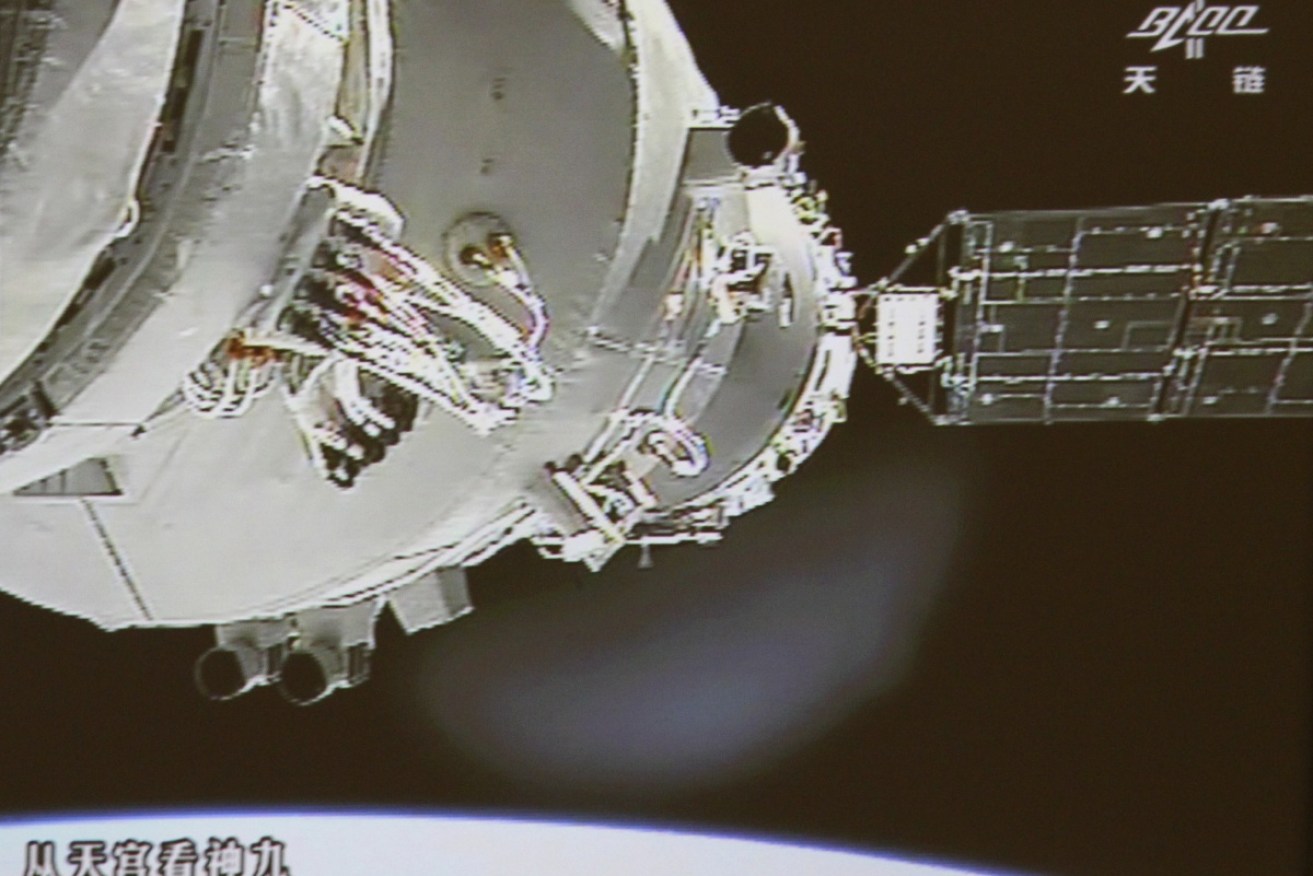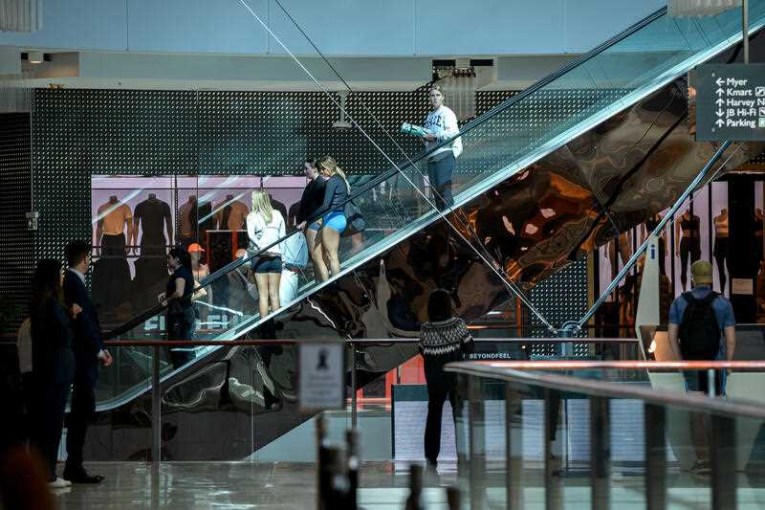A rogue Chinese space lab could hit Tasmania – but you’ll survive

The Shenzhou-9 spacecraft (right) docks with the Tiangong-1 lab module (left) in 2012. Photo: AAP
An out-of-control space station will likely crash to Earth within weeks, with Tasmania and New Zealand inside the possible strike zones.
China’s Tiangong-1 is likely to crash in early April, give or take a week, according to the latest estimate by US-funded Aerospace Corporation, published on March 8.
Burning space debris could either fall harmlessly into the ocean or, in a “worst case scenario”, hit anywhere in northern USA, northern China, the Middle East, central Italy, northern Spain, South America, southern Africa – or New Zealand or Tasmania.
“There is a chance that a small amount of Tiangong-1 debris may survive reentry and impact the ground,” Aerospace Corporation said.
“Should this happen, any surviving debris would fall within a region that is a few hundred kilometres in size and centred along a point on the Earth that the station passes over.”

The most heavily populated areas where Tiangong-1 debris could strike are marked in yellow, and include the island state of Tasmania off Australia’s south coast. Photo: Aerospace Corporation
Residents of at-risk regions are extremely unlikely to be harmed, Aerospace Corporation said.
“The probability that a specific person (ie you) will be struck by Tiangong-1 debris is about one million times smaller than the odds of winning the Powerball jackpot.
“In the history of spaceflight, no known person has ever been harmed by reentering space debris. Only one person has ever been recorded as being hit by a piece of space debris and, fortunately, she was not injured.”

The Tiangong-1 weighs approximately 8500 kg. Photo: China National Space Administration
Tiangong-1 – which means “heavenly palace” in Mandarin – was the first orbiting module launched by China’s National Space Administration in 2011. It was meant as a prototype for a future fully-fledged space station, which China plans to build by 2020.
The 12-metre module was where China’s first female astronaut Liu Yang flew on a mission in 2012. The lab has two sleep stations for astronauts, and two manned missions were completed.

The Tiangong, seen here in its carrier rocket, was supposed to crash harmlessly in the ocean. But its orbit over the Earth has shifted, opening up the possibility of a land crash. Photo: Getty
But things went wrong when China lost control of the lab in 2016, forcing experts to keep constant watch and conduct difficult mathematical calculations to estimate when and where it might fall to Earth.
The calculations are difficult because they must factor in multiple variables, including atmosphere density and the space station’s speed and orientation in space.
In an update on March 6, the European Space Agency estimated the Tiangong would fall to Earth between March 29 and April 9, but warned this calculation was “highly variable”.

China’s first female astronaut Liu Yang waves as she emerges from the reentry capsule of Shenzhou-9 in Mongolia in 2012, after a 13-day mission to the Tiangong-1. Photo: AAP
Jonathan McDowell, a US-based astronomer, explained that a one-hour error in the expected reentry time would throw out the calculations of where it might strike by 27,000 kilometres.
“And currently our estimate has a two-week uncertainty,” he said.
Australia has been struck before. US space station Skylab crashed on Western Australia’s south-east coast in the early hours of July 12, 1979, scattering debris across the Nullarbor and the eastern goldfields. No one was hurt.
Search for debris turned into a frenzy when The San Francisco Examiner offered $US10,000 to the first person to arrive at its office with an authentic piece of Skylab. The prize was claimed by 17-year-old Stan Thorton of Esperance.

A piece of Skylab on display in the Esperance museum. Photo: AAP
The Shire of Esperance made fun of NASA by issuing it a $A400 littering fine. A California DJ and his listeners held a fundraiser to pay the fine in 2003.
To this day, Skylab’s crash landing is celebrated in the local Esperance museum.








